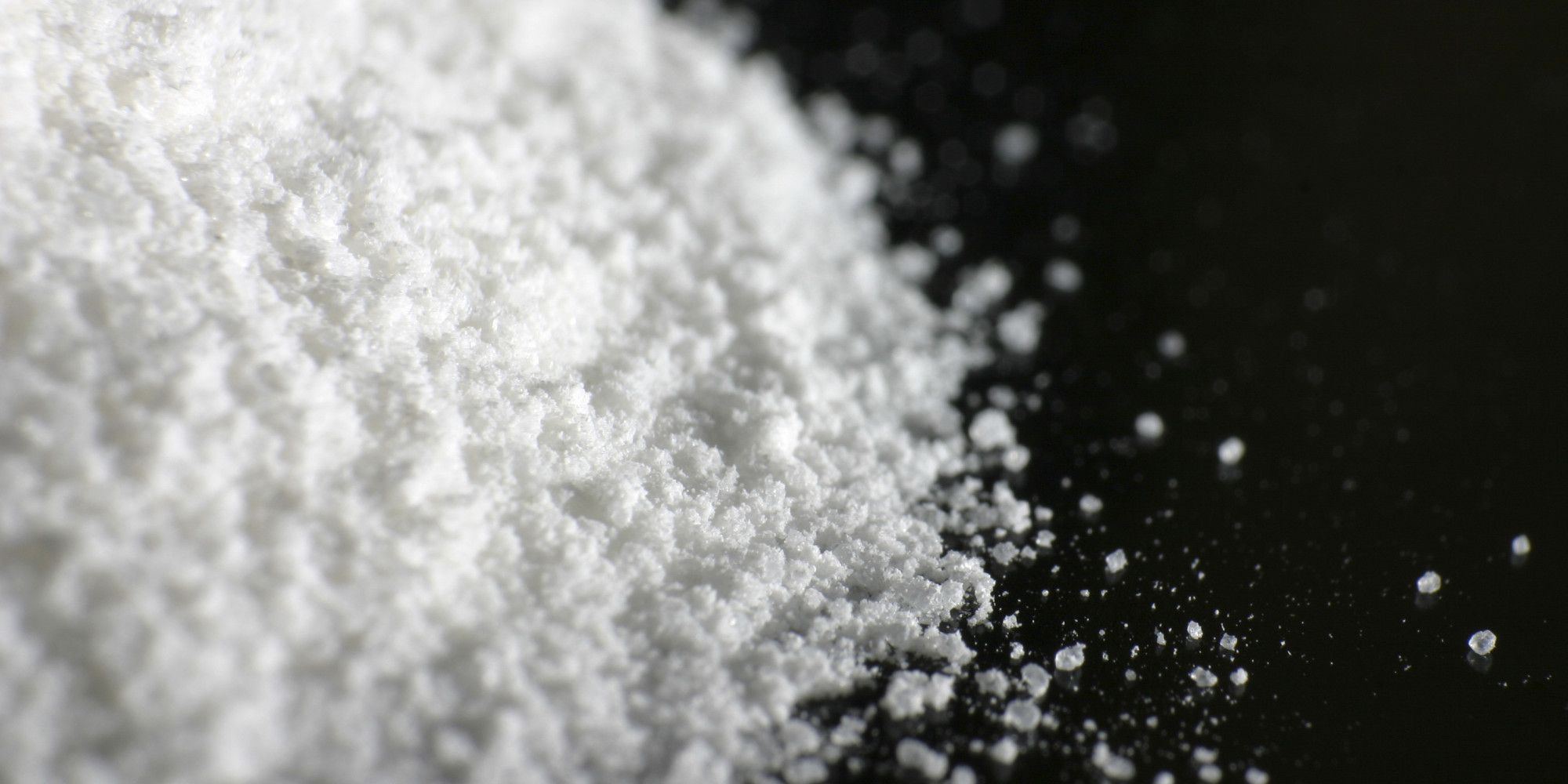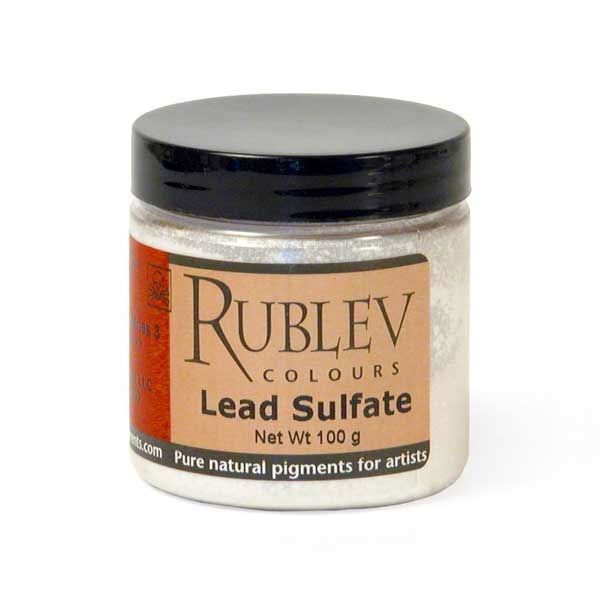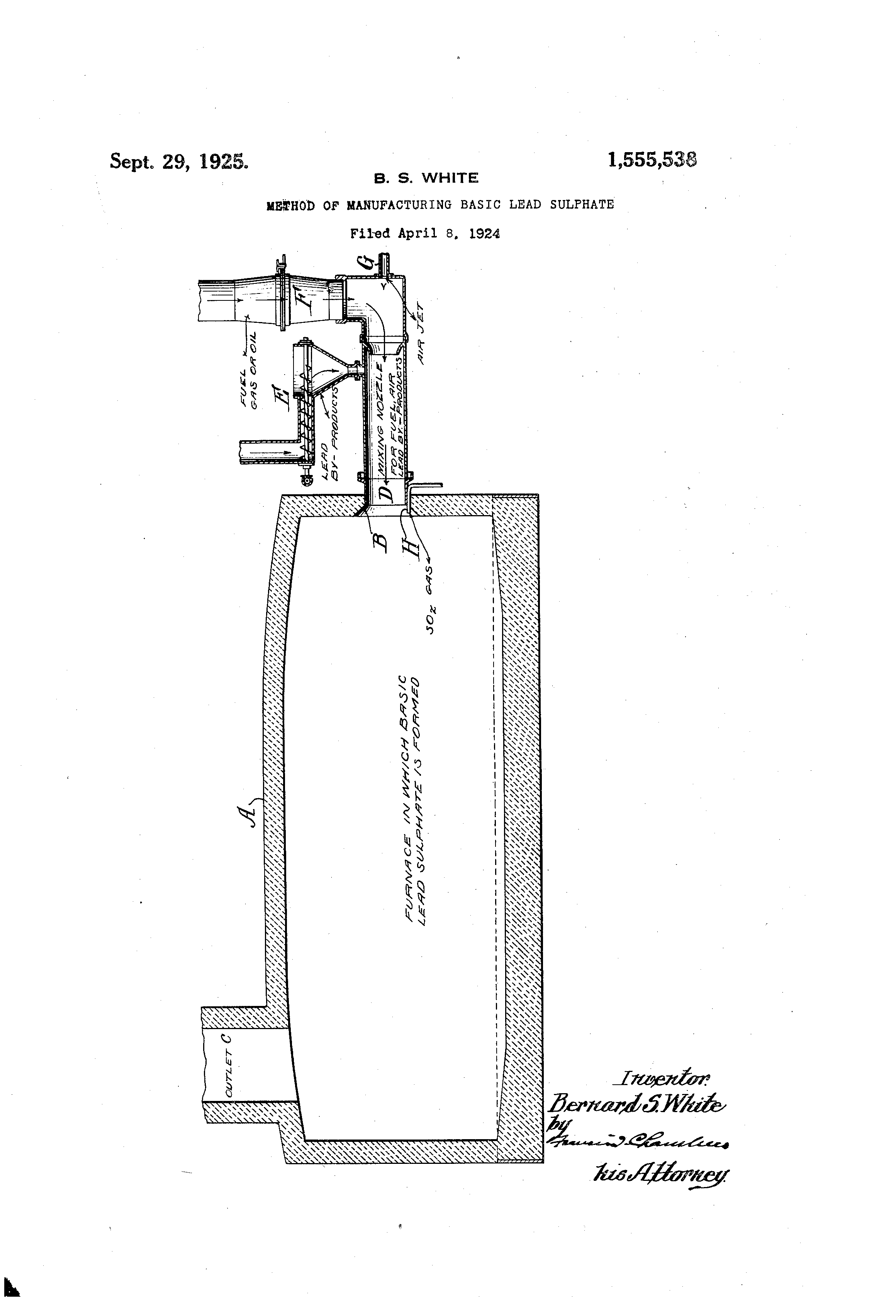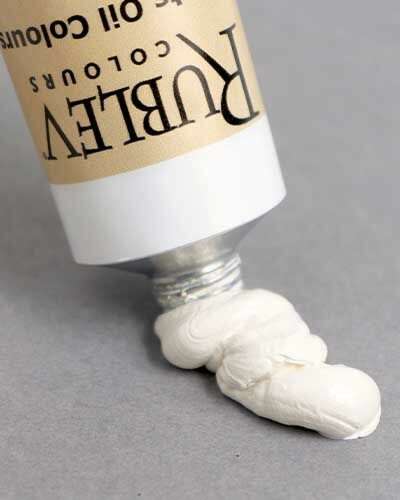

Lead sulfate (British spelling, sulphate), PbSO4, formed the basis of several white pigments that were made on a large scale in the 19th and 20th centuries and sold under a variety of names, such as "Patent White Lead," "Non-poisonous White Lead," "Sublimed White Lead," etc. Some of these pigments did not consist entirely of lead sulfate but contained other minerals, such as zinc oxide, barite (barium sulfate), magnesia (magnesium carbonate), etc., in varying quantities. They were made by different methods, and most of those sold were produced by patented processes. One of the first patents to show the use of lead sulfate as a pigment was given to William Cumberland of New York in 1838, U.S. patent number 767.
In the 19th century, three primary methods were used to prepare lead sulfate. The first method consisted of precipitating a soluble lead salt (lead acetate or lead nitrate in dilute solution; perhaps the best method is the one where lead acetate is used) with dilute sulfuric acid, the dilute acetic acid obtained in the supernatant liquid being used over again for dissolving metallic lead. This process varied by grinding the litharge with one-fourth its weight of common salt and treating the mixture with sulfuric acid. Lead sulfate was also obtained in large quantities as a by-product in manufacturing aluminum acetate from lead acetate and aluminum sulfate.
The second method was obtained by roasting a mineral containing zinc sulfate and lead sulfide ore—lead oxide and lead sulfate are formed in the process—the product known as 'sublimed white lead' (Bartlett Lead). The fumes containing these products and zinc oxide were collected in chambers provided for the purpose. The product obtained in this manner was subjected to complex treatment. The composition of this product tended to be somewhat irregular; the shade was not always pure, being a bluish gray tint to white. 'Non-poisonous white lead' or patent white lead and 'sublimed white lead' are mainly composed of lead sulfate with small amounts of lead and zinc oxides. The last-named is a primary lead sulfate with some zinc oxide.
Grinding precipitated lead sulfate with zinc oxide and perhaps other compounds under edge runners was a third method of obtaining lead sulfate. Freeman's White Lead was a mixture of lead sulfate, zinc oxide, magnesium carbonate, and artificial barite (also called blanc fixe) obtained in this manner.
The naturally occurring mineral anglesite, PbSO4, is an oxidation product of lead sulfide ore, galena. Several lead sulfates are known: PbSO4·PbO; PbSO4·2PbO; PbSO4·3PbO; PbSO4·3PbO; PbSO4·4PbO; the first two are most commonly used in the paint industry along with a mixed pigment containing zinc oxide and barium sulfate.

Three methods of modern manufacture for lead sulfate pigments were used in the 20th century. The first was the formation of lead sulfate as a component of the mixture of zinc oxide and lead sulfate based on earlier methods made from ores through sublimation in controlled atmospheres. Second, in 1935, a new basic lead sulfate was made by precipitation that gave improved properties and higher basicity, but it proved uneconomical and was abandoned after 1960. The third method, and one which produces most lead sulfate today, is formed by a fuming process where molten lead is atomized in a jet flame in the presence of excess air and sulfur dioxide. Most of the lead sulfate today is used in manufacturing the active paste for lead acid batteries.
Names for Lead Sulfate
Lead sulfate pigments were sold under many trade names, and it is not always clear whether they refer to the basic form. These include fast white, milk white, and Mulhouse white for lead sulfate (Colour Index Pigment White 3), basic sulfate white lead, Lewis white lead, sublimated white lead, and white lead sulfate for basic lead sulfate (Colour Index Pigment White 2).

What is Historical Flemish White?
A lead carbonate sulfate mineral, leadhillite (PbSO4·2PbCO3·Pb(OH)2), was identified in pigments from the Tiantishan Grottoes, China. Lead sulfate pigments have been identified as artists' pigments in 13th to 16th-century Chinese paintings. It is also believed to have been used as a white pigment by late 18th-century and early 19th-century British watercolorists. George Field named lead sulfate "Flemish white" in his treatise Chromatography. In contrast, another form, including zinc white and barite, was sold under the name "Freeman's white"—a composite white pigment patented by Joseph Freeman in 1882 in England. Freeman's white lead was initially described as a mixture of lead sulfate and zinc white ground under high pressure. Freeman added barium sulfate to the mixture in a later patent for an improved white pigment.
Hydrogen peroxide—in both aqueous and organic solvent solutions—has long been used by conservators to convert darkened lead white (lead sulfide [PbS] to lead sulfate [PbS4]), which is white and has morphological characteristics nearly identical to those of the original artist's material, basic lead carbonate (Pb(OH)2·2PbCO3).
Permanence and Compatibility
Lead sulfate is a white, somewhat crystalline, very heavy powder, its specific gravity being about 6.3. It is only slightly soluble in water, insoluble in dilute acids and alcohol, but soluble in solutions of ammonium salts and strong sulfuric acid. Boiling concentrated hydrochloric acid dissolves it, and crystals of lead chloride fall as the solution cools. It is not readily acted upon by hydrogen sulfide and is, therefore, more permanent than lead white when exposed to polluted air. Because its solubility was less than basic lead carbonate, it was often sold as "nonpoisonous white lead."
According to Georg Zerr and Robert Rübencamp, lead sulfate is a color of 'dazzling whiteness.' Its color is an excellent white but slightly yellower in tone than lead white and about equal to barite (baryte). The hiding power of lead sulfate pigment is less than lead white because of its more crystalline nature, and its drying quality is also less. Lead sulfate is either a neutral pigment of crystalline structure with poor hiding power or a basic pigment with better opacity but less than basic lead carbonate. Compared to basic lead carbonate, it does not mix well with oil. According to Laurie, lead sulfate prepared by precipitating the lead salt with sulfuric acid had poor covering power, but that produced by sublimation gave the best pigment. It was a pure white, slightly 'blue in color and covering as well as white lead.' Lead sulfate was less used alone than in mixtures with and shading other pigments.
Lead sulfate is unaffected by light. Lead sulfate is little affected by hydrogen sulfide found in air pollution. It was developed for use in outside house paints because it did not have the same tendency to darken when exposed to pollution containing hydrogen sulfide. However, when applied in the watercolor technique, traces of hydrogen sulfide in the air may cause it to darken. Although lead sulfate is theoretically incompatible with sulfide pigments and should form black lead sulfide in contact with them, no examples are readily known.
Oil Absorption and Grinding
Basic lead sulfate absorbs a small quantity of oil, requiring 22 grams of linseed oil for 100 grams of pigment to form a paste. It grinds well with linseed oil but not as quickly as does lead white (basic lead carbonate).
Toxicity
Although writers in the 19th century often wrote that lead sulfate was non-toxic and hence gave the designation of 'non-poisonous white lead,' it is toxic if inhaled as dust or ingested. It is a cumulative poison, and repeated exposure may lead to anemia, kidney damage, eyesight damage, or damage to the central nervous system (especially in children). Grinding and making the pigment into the paint can be hazardous, and the sale of lead compounds in some countries has been prohibited. Painters may suffer from "painters' colic" or "plumbism" if they are careless in using it. Care should always be used in handling the dry powder pigment so as not to inhale the dust. Do not smoke, eat or drink while using the pigment in any form, including in paint.
A Note About this Pigment from Natural Pigments
Rublev Colours Lead Sulfate is a bright white powder suitable for most media use, but especially for oil. It is tetrabasic lead sulfate made according to the modern fume process, resulting in a brilliant white powder of high purity.
A Note About Flemish White from Natural Pigments
Rublev Colours Flemish White is a warm white, slightly warmer than lead white. This warm white is opaque but not to the same degree as titanium white and approximately that of lead white (being slightly less opaque than pure lead white), so it won't kill colors in mixtures with it. It has a creamy, long, and stringy consistency making it excellent in pure highlights.
References
Max Doerner (1934). The Materials of the Artist. Harcourt, Brace & Co., 1934.
George Field (1869). Chromatography. Thomas W Salter, Editor. 1869. p. 67.
Margo R. McFarland (1997). “The Whitening Effects of Peroxide Gels on Darkened Lead White Paint.” Paper delivered at the Book and Paper specialty group session, AIC 25th Annual Meeting, June 1997, San Diego, California. http://cool.conservation-us.org/coolaic/sg/bpg/annual/v16/bp16-08.html
Susan E. Schur (1985). “Conservation Terminology: A Review of Past and Current Nomenclature of Materials.” Technology and Conservation, Spring (p. 34–39); Summer (p.35-38); Fall (p. 25–36), 1985.
Frequently Asked Questions
What is lead sulfate used for?
Lead sulfate is primarily used as a pigment in art, especially in paints, due to its white color and properties suitable for painting.
Do artists still use lead paint?
While lead-based paints have been largely phased out due to health concerns, some artists may still use them for specific purposes or historical accuracy in their work.
What is the white lead in art?
White lead in art refers to lead-based pigments used historically in painting. It includes lead carbonate and lead sulfate compounds, known for their opacity and bright white hue.
What is Flemish white?
Flemish white is a type of lead carbonate sulfate pigment used historically as a white pigment by artists. It was identified in pigments from 13th to 16th-century Chinese paintings and used by British watercolorists in the late 18th and early 19th centuries.
What is the difference between Flemish white and Cremnitz white?
Flemish white and Cremnitz white are both lead-based white pigments used in art, but they differ in composition and properties. Flemish white is a lead sulfate, while Cremnitz white, also known as Kremnitz or Krems white, is a pure form of basic lead carbonate.
Is lead white illegal?
The legality of lead white varies by country and region. In many places, its use is restricted or banned, especially in household paints, due to its toxicity.
What does white lead in paint act as?
White lead in paint acts primarily as a pigment, providing opacity and brightness. It also contributes to the durability and protective qualities of the paint.
What does white lead do?
White lead serves as a pigment in paint, offering high opacity and a bright white color. It also enhances oil paint's durability and adherence to surfaces.














